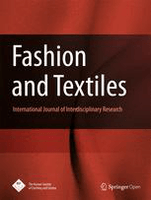
Fashion and Textiles
Scope & Guideline
Connecting Research with Fashion's Future
Introduction
Aims and Scopes
- Innovative Textile Technologies:
The journal publishes research on the latest advancements in textile technologies, including smart textiles, 3D printing, and sustainable materials, highlighting the role of innovation in textile engineering. - Fashion Design and Consumer Behavior:
Research exploring the dynamics of fashion design, consumer preferences, and the impact of social media on fashion trends is a core area, emphasizing consumer engagement and marketing strategies. - Sustainability in Fashion:
A significant focus is placed on sustainable practices within the fashion industry, including eco-friendly materials, recycling methods, and corporate social responsibility, reflecting the industry's shift towards sustainability. - Ergonomics and Functional Design:
The journal addresses the ergonomic aspects of clothing and textiles, including comfort, fit, and functionality, particularly in specialized applications such as sportswear and medical devices. - Digital Fashion and Virtual Environments:
Research on digital fashion, including virtual fitting technologies, augmented reality applications, and the use of artificial intelligence in fashion design, is increasingly prevalent.
Trending and Emerging
- Smart Wearable Technologies:
There is a growing interest in the development and application of smart textiles and wearable technologies, focusing on functionality and user interaction, which aligns with advancements in IoT and health monitoring. - Sustainability and Circular Fashion:
Sustainability continues to be a prominent theme, with increasing research on circular fashion practices, waste reduction, and environmentally friendly materials, reflecting a global shift towards sustainable fashion. - Digital Fashion and Virtual Experiences:
The rise of digital platforms for fashion, including virtual fitting technologies and augmented reality, is a trending theme, addressing the changing landscape of fashion consumption and design. - Consumer Engagement through Technology:
Research on how technology, including AI and data analytics, influences consumer behavior and engagement in fashion is on the rise, highlighting the importance of personalized experiences. - Health and Safety in Fashion Textiles:
Emerging studies focus on health-related applications of textiles, such as antimicrobial fabrics, ergonomic designs, and protective clothing, especially in light of global health challenges.
Declining or Waning
- Traditional Textile Techniques:
Research focusing on traditional textile techniques and craftsmanship has seen a decline, as the journal increasingly emphasizes modern technologies and innovations. - Physical Retail Dynamics:
With the rise of online shopping and digital experiences, studies centered around traditional brick-and-mortar retail dynamics are becoming less common, reflecting a shift in consumer behavior. - Conventional Fashion Marketing Strategies:
The exploration of traditional fashion marketing strategies is waning, as the focus shifts towards digital marketing, influencer dynamics, and personalized consumer experiences. - Historical Fashion Studies:
Research that delves deeply into historical fashion trends and their socio-cultural implications is becoming less frequent, as contemporary issues and technological advancements take precedence. - Basic Fabric Properties Analysis:
While fabric properties are still relevant, there is a noticeable decrease in studies that solely focus on basic analysis without integrating innovative applications or technologies.
Similar Journals

Dress-The Journal of the Costume Society of America
Navigating the Evolving Landscape of Costume StudiesDress - The Journal of the Costume Society of America, published by Routledge Journals, Taylor & Francis Ltd, serves as a premier platform for scholarship in the field of costume and fashion studies. Established in 1975, this journal has evolved significantly, covering a comprehensive spectrum of topics from historical textiles to contemporary fashion impacts. With its Q2 ranking in both Visual Arts and Performing Arts categories as of 2023, it boasts a reputable standing among its peers, positioned at a 38th percentile in Scopus rankings for Arts and Humanities. Although currently not Open Access, the journal aims to foster peer-reviewed research that not only enhances academic discourse but also informs practical applications in the arts and cultural industries. The combination of rigorous scholarship and a dedication to the rich cultural narratives of dress places Dress at the forefront of costume research, making it an invaluable resource for researchers, professionals, and students alike who are passionate about exploring the complex interplay of clothing, identity, and society.

Journal of Fiber Science and Technology
Bridging Theory and Application in Fiber ScienceJournal of Fiber Science and Technology is a pivotal scholarly publication dedicated to advancing the field of fiber science, encompassing the study of fibers and textiles across various applications. Published by SOC FIBER SCIENCE TECHNOLOGY in Japan, this journal has been a significant forum for innovative research since its inception, with coverage from as early as 1946. Despite its current categorization in the Q4 quartile across multiple disciplines including Chemical Engineering, Industrial and Manufacturing Engineering, and Materials Science, the journal provides a valuable platform for the dissemination of knowledge, fostering collaboration among researchers, professionals, and students alike. The journal promotes an interactive learning environment, welcoming contributions that underscore the latest advancements in fiber materials, processing technologies, and their broad industrial implications. By bridging theory and practical application, the Journal of Fiber Science and Technology is essential in shaping the future of fiber technology.
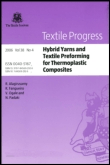
TEXTILE PROGRESS
Bridging Science and Industry in TextilesTEXTILE PROGRESS is a premier academic journal published by Taylor & Francis Ltd, dedicated to advancing the field of textiles and materials science. With an ISSN of 0040-5167 and an E-ISSN of 1754-2278, this journal serves as a vital resource for researchers and professionals interested in the interplay between chemical engineering, industrial processes, and manufacturing technologies related to textiles. Covering a wide scope of topics from 1969 to 2024, TEXTILE PROGRESS has established its reputation within the scholarly community, consistently achieving a Q2 ranking in various categories including Chemical Engineering, Industrial and Manufacturing Engineering, and Materials Science as of 2023. Its impressive Scopus rankings – 121st in Industrial and Manufacturing Engineering and 101st in General Chemical Engineering – reflect its significance and relevancy in the academic landscape. While not an open-access journal, TEXTILE PROGRESS ensures accessibility through its extensive distribution channels, enabling students, researchers, and professionals alike to benefit from cutting-edge research and developments in textile technology and science.

TEXTILE HISTORY
Illuminating the Cultural Tapestry of TextilesTEXTILE HISTORY is a distinguished journal focusing on the rich tapestry of textile development across various historical contexts, published by Routledge Journals, Taylor & Francis Ltd. With origins dating back to 1968, this journal serves as a crucial platform for scholarly discourse in the fields of history, industrial and manufacturing engineering, and business management. It holds impressive rankings, including Q2 in History and ranks within the top 20% in Arts and Humanities, reflecting its significant contribution to understanding the socio-economic and cultural implications of textiles. Additionally, it operates under a traditional access model, ensuring that quality research is preserved within a structured environment. The journal is an invaluable resource for researchers, professionals, and students alike, aiming to advance knowledge and inspire future studies in textile history. Situated in the United Kingdom, the editorial team is committed to fostering a vibrant academic community that engages with the dynamic intersections of textiles, industry, and cultural heritage.
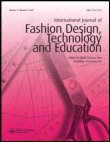
International Journal of Fashion Design Technology and Education
Advancing Knowledge in Fashion for Tomorrow's CreativesThe International Journal of Fashion Design Technology and Education, published by Taylor & Francis Ltd, stands at the forefront of research in the dynamic fields of fashion design, technology, and education. Since its inception in 2008, the journal has provided a vital platform for researchers, educators, and practitioners to share innovative findings, pedagogical strategies, and technological advancements within the fashion industry. With an impressive impact factor and categorizations in the Q1 and Q2 quartiles across multiple disciplines—including Visual Arts, Education, and Industrial Engineering—this journal not only offers insightful contributions to academia but also informs practical applications in the ever-evolving fashion landscape. Although currently non-open access, the journal remains accessible to a wide range of audiences, facilitating a deeper engagement with contemporary issues in fashion technology and education. As the journal converges its themes through to 2024, it continues to encourage submissions that push the boundaries of knowledge and creativity, making it an essential resource for anyone invested in the future of fashion.
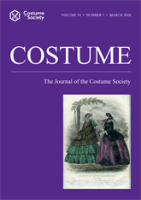
Costume-The Journal of the Costume Society
Celebrating the Art and Science of Costume ResearchCostume - The Journal of the Costume Society is a premier academic journal published by Edinburgh University Press, dedicated to interdisciplinary research in the field of costume studies, fashion history, and cultural heritage. With an ISSN of 0590-8876 and an E-ISSN of 1749-6306, this journal has been a vital platform for scholars since its inception in 1965, continuing to address contemporary issues surrounding dress and identity up until 2024. Recognized for its contribution to History and categorically positioned in Q2 for this field and Q4 in Business, Management, and Accounting for 2023, Costume garners attention from both historians and fashion theorists alike, evidenced by its Scopus rankings of #714 in Arts and Humanities History and #190 in General Business, Management and Accounting. While it operates under a traditional access model, it remains a crucial resource for those engaged in the exploration of costume, fashion, and their societal impacts. With its rich scholarly discourse, Costume invites researchers, professionals, and students to contribute to and benefit from its extensive range of articles, illuminating the profound narratives that clothing narratives can tell.
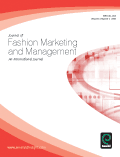
Journal of Fashion Marketing and Management
Unveiling Insights in Fashion Marketing and ManagementJournal of Fashion Marketing and Management, published by EMERALD GROUP PUBLISHING LTD, stands at the forefront of academic inquiry within the fashion marketing and management domain. With its commitment to excellence, this esteemed journal maintains a robust Q1 ranking in Business and International Management and a Q2 ranking in Marketing for 2023, reflecting its high impact and relevance in the field. The journal serves as a vital resource for researchers, professionals, and students interested in the evolving dynamics of fashion marketing, consumer behavior, and strategic management practices. Offering critical insights and innovative research, it aims to bridge theoretical frameworks with practical applications, thereby enhancing the understanding of marketing phenomena in the fashion industry. The ISSN for the print version is 1361-2026 and for the electronic version 1758-7433. The journal operates without open access, allowing for a selective dissemination of quality scholarly work, thus solidifying its reputation as a leading publication in the United Kingdom's vibrant academic landscape.

Tekstil ve Konfeksiyon
Fostering Interdisciplinary Insights in Textile and FashionTekstil ve Konfeksiyon, a distinguished journal published by the E.U. Printing and Publishing House, serves as a vital resource in the fields of Industrial and Manufacturing Engineering as well as Materials Science. With an ISSN of 1300-3356, this Turkish journal has witnessed significant development since its inception in 2008, continuing to contribute valuable insights and advancements through 2024. Although categorized in the third quartile (Q3) for Industrial and Manufacturing Engineering and the fourth quartile (Q4) for Materials Science, the journal ranks respectably within its fields—249th out of 384 and 357th out of 463, respectively, according to Scopus. Researchers, professionals, and students can gain access to a variety of cutting-edge studies and applications that reflect the latest trends and innovations in textile and apparel technology. The journal emphasizes the importance of practical applications and interdisciplinary research, fostering a platform for knowledge exchange and development aimed at pushing the boundaries of textile and clothing sciences.

Fashion Theory-The Journal of Dress Body & Culture
Exploring the Threads of Culture and IdentityFashion Theory - The Journal of Dress Body & Culture is a premier academic journal published by Routledge Journals, Taylor & Francis Ltd. since 2002, catering to the dynamic fields of cultural studies and visual arts. With a substantial impact factor placing it in the first quartile (Q1) of both Cultural Studies and Visual Arts and Performing Arts, this journal stands as a critical platform for scholarly discourse. It is ranked among the top 5% of journals in Visual Arts and Performing Arts and the top 13% in Cultural Studies according to Scopus rankings, emphasizing its significance and influence within the academic community. Although not an open access journal, Fashion Theory facilitates access to cutting-edge research that explores the intersection of fashion, identity, and culture, making it an essential resource for researchers, professionals, and students interested in the implications of dress and body throughout history and contemporary society. This journal not only provides insights into fashion studies but also engages with broader socio-cultural narratives, making it indispensable for those seeking to understand the intricate relationship between attire and identity.
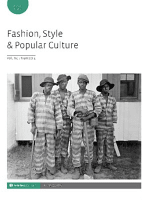
Fashion Style & Popular Culture
Fusing Fashion Insights with Cultural NarrativesFashion Style & Popular Culture is a pioneering journal that explores the dynamic interplay between fashion and societal trends within a diverse cultural context. Published by INTELLECT LTD in the United Kingdom, this journal serves as a vital resource for researchers, professionals, and students engaged in fields such as cultural studies, marketing, and social psychology. With an ISSN of 2050-0726 and an E-ISSN of 2050-0734, it provides a robust forum for scholarly discourse, examining the influence of fashion on identity formation, popular culture, and contemporary social practices. Despite not being open access, its esteemed rankings across various quartiles highlight its relevance, particularly in the category of Cultural Studies, where it proudly holds a Q2 status as of 2023. The journal's significance is underscored by its commitment to multidisciplinary research and analysis, inviting contributions that enhance our understanding of material culture and its ramifications on everyday life. As it converges from 2016 to 2024, Fashion Style & Popular Culture continues to cultivate a rich academic dialogue that bridges theoretical insights with practical implications in an ever-evolving cultural landscape.